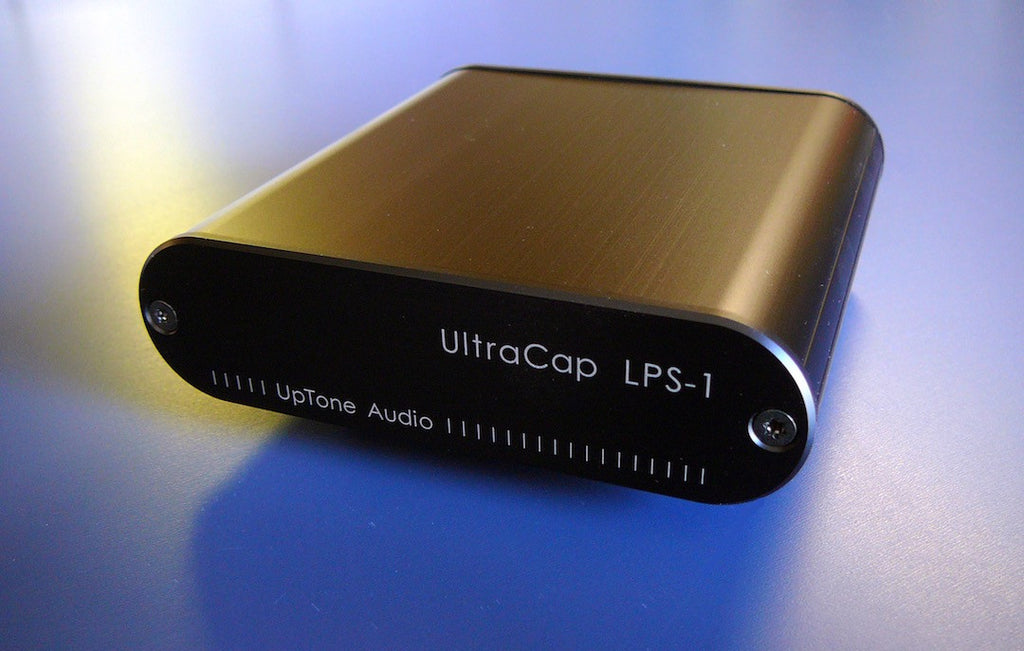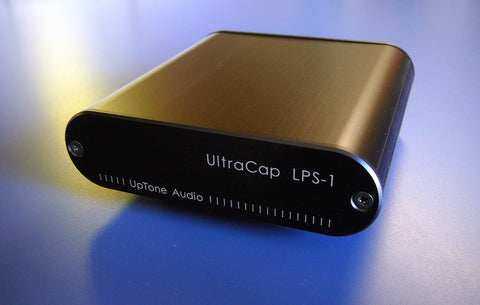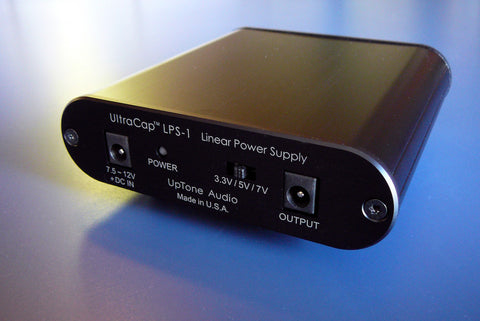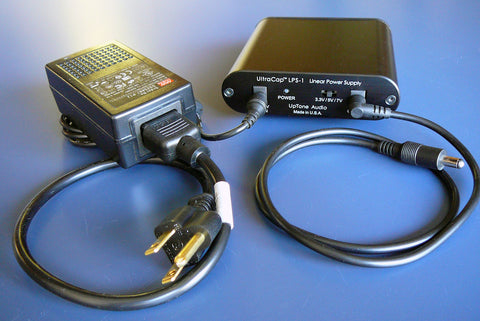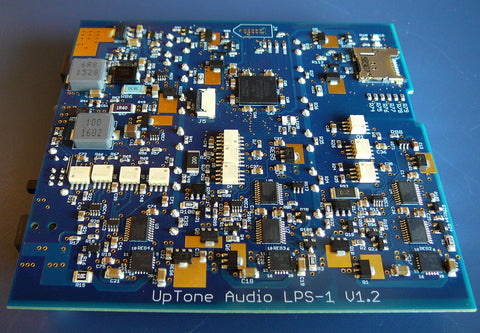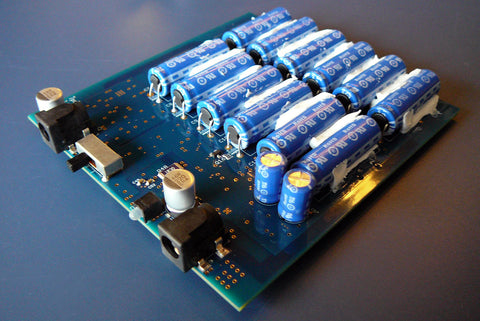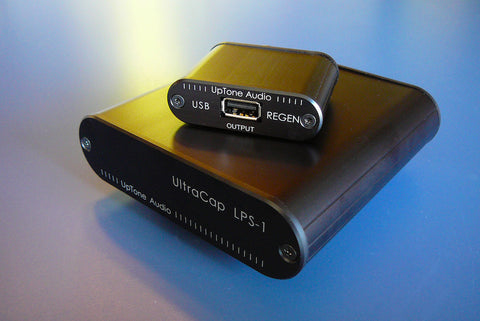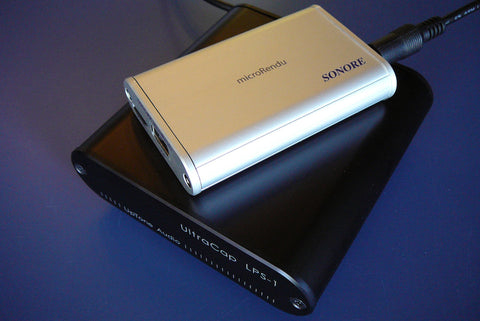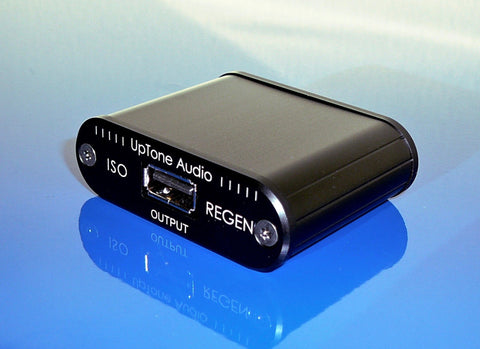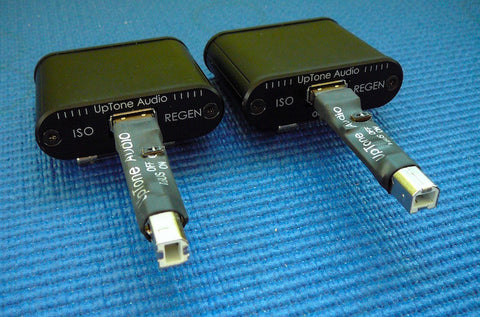UltraCap™ LPS-1
$ 395.00
Please visit the product order page for the new UltraCap LPS-1.2.
The world's first bank-switching, microprocessor-controller, ultracapacitor-based, ultra-low-noise external linear power supply has arrived!
In development for more than a year, and with 262 parts on the double-sided, 4-layer circuit board, this tour de force of engineering challenges traditional notions about what is important in power supply design.
Use of the UltraCap™ LPS-1 in a quality music reproduction system will yield surprisingly audible improvements, and we invite comparisons to any other low voltage linear power supply.
The LPS-1 is a single output, 1-amp linear power supply intended for powering a wide range of audio and computer devices. Examples include: UpTone's own USB REGEN, the Sonore MicroRendu, small DACs and headphone amps, USB>S/PDIF converters, specialty computer USB cards, SSDs, fibre media converters, PS Audio LANRover, SqueezeBox Touch, etc.
A switch on the back of the LPS-1 allows for setting of the output voltage to 3.3V, 5V, or 7 volts. The input and output jacks of the LPS-1 are standard 5.5mm x 2.1mm size DC barrel connectors.
The dimensions of the LPS-1 are: 110mm (4.33 inches) wide x 112mm (4.41 inches) deep x 30mm (1.18 inches) tall; Add 6.5mm (0.26 inches) for included rubber feet.
Included with the LPS-1:
A 70cm, 16awg, DC cable with 5.5mm x 2.1mm plugs at both ends (correct for a REGEN, MicroRendu, and many other popular devices that use that size).
A Mean Well SMPS world-voltage-compatible tabletop SMPS for "energizing" the UltraCap™ LPS-1, along with a 45cm AC power cable (standard IEC plug one end, USA wall plug at the other—international buyers can cut and put a local plug on or just use any standard power cord).
An LED at the back of the LPS-1 changes color (red/amber/green) based on the status of the supply. The programming of its 4096 logic-element FPGA controls and protects every aspect of its operation to assure safe and reliable performance.
There has never been a power supply like this before! The UltraCap LPS-1 will elevate the performance of whatever component you power with it.
[The adventurous could even purchase two units and hook their outputs up in series, perhaps with one set to 7V and the other to 5V to obtain 12V; An even more interesting application would be for a DIY hobbyist to use two units harnessed together and center-tapped to produce a pure and isolated bi-polar (+ & -) supply for audio circuit use.]
*************************
USER REVIEWS HAVE BEEN POURING IN SINCE WE BEGAN SHIPPING LAST OCTOBER. Please visit: the "UltraCap LPS-1 Listening Impressions" thread at ComputerAudiophile.com. And Stereophile/AudioStream reviewed the LPS-1 as well.
*************************
SO WHAT ARE ULTRACAPACITORS AND WHY ARE THEY EXCITING FOR USE IN AUDIO POWER SUPPLIES?
Think of ultracapacitors (technically "electric double-layer capacitors" and often called supercapacitors) as a cross between a battery and a regular storage capacitor. They offer:
*High energy storage density--Small ones are 1 Farad (as opposed the microFarad scale typically used for power supply caps), and the bigger ones range from 150 Farads to 500 Farads! The LPS-1 has a total of 60 Farads of supercaps.
*Very low ESR (equivalent series resistance)--Much lower than batteries, and they can discharge VERY fast, thus delivering a lot of energy quickly. These are important attributes for an audio component power supply.
*Very fast charge times--and designed with properly, they can be charged/discharged millions of times.
[If you wish to learn more about EDLCs/ultra/super caps, here are a couple of good places to start:
https://www.tecategroup.com/ultracap...acitor-FAQ.php
https://en.wikipedia.org/wiki/Supercapacitor ]
*************************
It is true that low noise is important to power supply performance, and we use the best-in-class Texas Instruments TPS7A4700 regulators (0.004mV RMS noise) for the 1-amp output of the UltraCap LPS-1. Yet just producing a low noise output is not what sets the LPS-1 apart from other linear power supplies.
Components that an external DC supply will be used to power already have their own low-noise voltage regulators inside them (most of which are nowhere near as quiet as those in the LPS-1), so the audible advantage from using this UltraCap™ power supply—versus a stock PS or a competitor's LPS—is not about low noise.
Rather, the two main advances of UpTone Audio's groundbreaking new power supply are:
1) Speed and ultra-low output impedance over a broad bandwidth. (Battery supplies are poor in this regard; And many traditional traditional transformer/diode/capacitor/regulator linear PS units rely on big banks of filter caps to smooth what the regulator sees—which impacts speed and impedance.)
2) 100% galvanic isolation from the AC mains at all times. While one bank of ultracapacitors is supplying output, the other bank is charging. The output is never connected to the bank that is recharging, and the sophisticated design ensures silent and smooth transitioning from one bank to the other.
The most important result of the isolation afforded by the UltraCap™ LPS-1 is that it completely blocks the path of AC LEAKAGE CURRENTS. Some more in-depth information on the subject can be found on the Swenson Explains page, and here is bit more condensed explanation of this important topic—also written as a forum post by John Swenson:
The PRIMARY purpose of the LPS-1 is to break leakage current induced ground loops, (which exist in almost all systems), and the fact that the output is isolated from the input (thus not affected by noise of the feeder supply) is a bonus, not a primary goal. Of course the LPS-1 has a very low noise, very low impedance output as well.
There are two very different mechanisms by which an AC power supply can interact through the AC mains:
1) traditional "noise injected back into the AC line." This is easy to measure, easy to grasp what is happening, and many devices exist to try and filter out this sort of noise.
2) Leakage current, this is created by capacitances between the AC line and the DC output of the supply, it ALWAYS exists but varies from supply to supply. This is hard to measure, hard to grasp what it is and how it propagates through a system. After everything else is taken care of the leakage current is still there, I consider it to be one of the last great untouched detriments to obtaining best sound.
Both #1 and #2 exist in almost any system to varying degrees. Since there is already a large body of knowledge and products to deal with #1, I set out to work on finding ways to deal with #2. The LPS-1 is the first fruit of that work.
Leakage current has always been there, but has not been a big issue until recently for two reasons:
A) it is fairly low level in most systems so its effects have been masked by all the other problems preventing our systems from being their best, as these other sources of problems have been identified and addressed, the sonic results of the leakage current are now much more obvious.
B) leakage current from SMPS is usually much higher than from LPS, so the inclusion of computers (which are usually run from SMPS) into systems has greatly exacerbated the sonic detriment due to leakage current.
*************************
Please visit our sponsored forum at ComputerAudiophile.com to learn more about this and other exciting UpTone Audio components.

